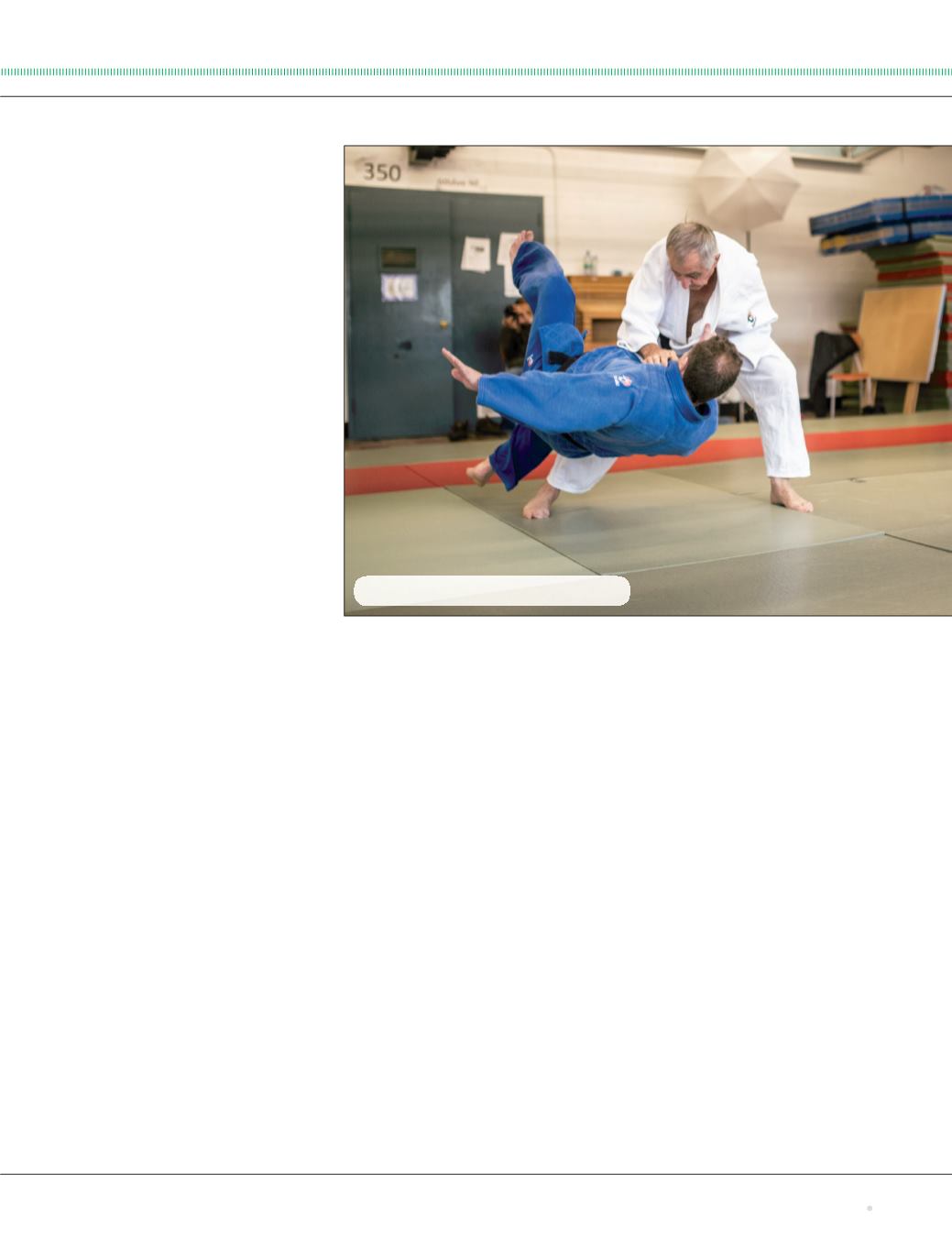
room was born.” he said, provoking
a chuckle from his students at the
local dojo. “My roommate saw the
advertisement for the class and asked
me if I wanted to try. I’ve stuck with it ever
since.”
Ghrandozz Aguilar, an 11-year-old
Grade 6 student, has been studying judo
under DePauw for five years and holds
the rank of green belt.
“Ron is my favourite teacher,” Aguilar
said. “He just teaches me well, and has
taught me a lot. He always helps me with
the figures that I have to do for tests.”
Leanne Marchand’s husband and son
are both students at the judo club, as
well. She said DePauw is very active both
physically and in the community, and that
the kids look up to his quiet authority.
“I like him very much, and my son has
a lot of respect for him and looks up to
him quite a bit,” she said. “When Ron is
around, my son Sebastian takes his judo a
lot more seriously.”
Judo is a defensive art, DePauw
explained, as he showed off an
impressive arsenal of hip throws, hold-
downs, arm bars and strangles. While he
said his joints are a little creaky, he shows
no sign of slowing down.
“Judo means ‘the gentle way,’” he
said. “It’s not force against force; you use
the force of the other to immobilize and
defeat him.”
DePauw graduated with his master’s
and, with two academic degrees under
his judo belt, he thirsted for adventure.
This desire led him to Eastern Africa,
where he settled for three years in
Kenya to assist farmers in that country
in coping with semi-arid conditions
similar to those found back home in
Saskatchewan. DePauw was dispatched
to a plant breeding station in the town of
Njoro, where the Canadian International
Development Agency was administering
a project.
It was there that he had a chance
meeting with a dauntless and indepe-
ndent-minded Dane who would change
his life. Her name was Elsa Marie, and she
was also in Kenya doing development
work. She was on a short visit to Njoro,
but after that day the two were rarely
apart—50 years later, DePauw returns
home to eat lunch with Elsa Marie every
day at noon.
After returning from Kenya, DePauw
received his doctorate in plant genetics
from the University of Manitoba, and
settled down in Swift Current.
Since 1993, Ron and Elsa Marie
DePauw have been honing their
skills in their favourite joint pastime:
choreographed ballroom dancing.
“We do both choreographed
ballroom dancing and social dancing,
from the Peace River region in the north
to San Diego and Mexico in the south,”
DePauw said. “We dance in bars, casinos
and clubs.”
Watching these two turtledoves
engaged in complex dances like the jive,
foxtrot and rumba is something to see.
They laugh and swing as they perform
intricate moves like the fencepost,
cheek-to-cheek and hook turn.
Sometimes they make a misstep, but it’s
rare and usually gets some razzing out of
Elsa Marie.
“That’s the key to a good marriage,”
Elsa Marie said after getting her toes
trampled. “Let the man lead.”
Unlike casual dancing, choreo-
graphed ballroom dancing is a precise
set of moves that must be studied and
practised. There are clear parallels
with judo, giving some insight into the
methodical mind that has had such a
tremendous effect on Canada’s food
system.
Over the years, the biggest change
DePauw has seen in wheat breeding has
been the relentless march of technology.
He said innovations such as computing,
biotechnology and especially near-
infrared technology were indispensable
in his work.
“The amount of data we can handle
now is incredible, just incredible,” he
said.
Perhaps the largest feather in DePauw’s
multi-plumed cap is the development
of Canadian Prairie Spring, a whole
new class of wheat that overcame the
negative correlation between grain
yield and protein content. Another of his
Spring
2015
grainswest.com
23
Judo means “the gentle way,” most of the time.


